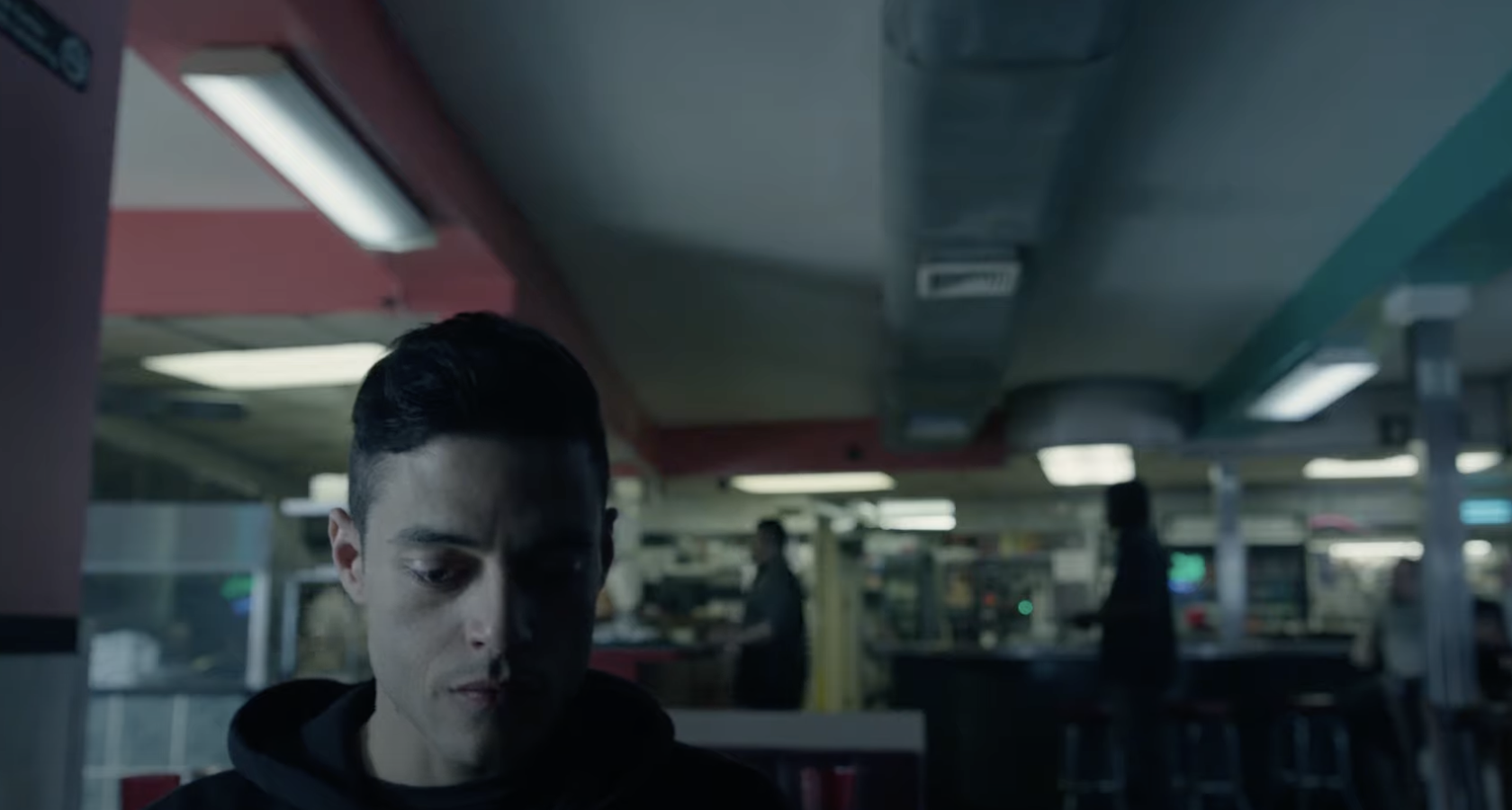By Carter Davies For Sober Standard
“Mr. Robot” isn’t just a tech thriller; it’s a searingly honest and visually arresting portrait of mental illness, addiction, and the fractured state of modern existence. While comparisons to “Fight Club” surface due to the narrative twists and exploration of fractured identity, “Mr. Robot” ultimately forges its own distinct path, crafting a uniquely compelling and deeply disturbing vision of our technologically saturated world. It’s a series that’s beautiful and brutal, captivating and confronting, and ultimately, profoundly necessary.
The Unflinching Gaze into the Abyss of Mental Health:
The brilliance of “Mr. Robot” lies in its unwavering commitment to portraying the realities of mental illness. Elliot Alderson, the series’ protagonist, suffers from social anxiety disorder, depression, dissociation, and paranoia. These aren’t merely plot devices; they are integral to his character and shape his perception of reality.
- Authentic Portrayal: The show avoids romanticizing or sensationalizing mental illness. Instead, it presents a raw and honest depiction of the daily struggles faced by individuals living with these conditions. Elliot’s internal monologues, often delivered directly to the audience, provide a window into the chaos and confusion that plagues his mind.
- Dissociation and Alternate Realities: Elliot’s dissociative episodes blur the lines between reality and delusion, challenging the audience to question what is real and what is not. This narrative technique mirrors the subjective experience of dissociation, allowing viewers to empathize with Elliot’s struggles to maintain a grip on reality.
- The Cost of Isolation: “Mr. Robot” also explores the isolating effects of mental illness. Elliot’s social anxiety makes it difficult for him to form meaningful relationships, leading to feelings of loneliness and alienation. This isolation exacerbates his mental health struggles and drives him further into the digital world.
Addiction as a Symptom of Deeper Wounds:
Prescription drug addiction is a recurring theme throughout “Mr. Robot,” serving as both a coping mechanism and a self-destructive force in Elliot’s life. The show doesn’t shy away from depicting the brutal realities of addiction, including the withdrawal symptoms, the cravings, and the moral compromises that addicts often make.
- Escaping the Pain: Elliot’s addiction to Adderall and, later, Suboxone, is a means of self-medicating his mental health symptoms. He uses these drugs to numb the pain of his past traumas, to quiet the voices in his head, and to feel more “normal.”
- The Cycle of Dependence: “Mr. Robot” exposes the cyclical nature of addiction, showing how it can quickly spiral out of control. Elliot’s attempts to get clean are often met with setbacks, highlighting the challenges of recovery and the importance of ongoing support.
- The Social Context of Addiction: The show also touches on the social factors that contribute to addiction, such as poverty, trauma, and the availability of prescription drugs. It suggests that addiction is often a symptom of deeper societal problems.
Beyond Genre: The Anxious Aesthetics of “Mr. Robot”
While elements of tech thrillers are present, applying a simple genre label doesn’t fully capture the essence of “Mr. Robot.” It’s more accurate to say the show crafts its own distinct aesthetic, one that reflects Elliot’s internal state and the pervasive anxieties of modern life. The show isn’t just about hacking; it feels like a digital anxiety dream.
- The Paranoid Gaze: The show is shot with a deliberate sense of unease. Unconventional camera angles, off-center framing, and a pervasive use of shadows create a feeling of constant surveillance and impending doom. This reflects Elliot’s paranoia and his distrust of the world around him.
- Digital Decay: The visual landscape of “Mr. Robot” is one of decay and disintegration. Dilapidated buildings, flickering screens, and glitching technology reflect the crumbling infrastructure of society and the fragility of our digital lives. It is a grim look at the underbelly of society that is hidden from most.
- The Beauty in the Broken: Despite its dark themes, “Mr. Robot” often finds beauty in the broken and discarded. The show’s use of light and shadow, its evocative soundtrack, and its carefully chosen locations create moments of unexpected grace and poignancy, even amidst the chaos and despair.
- The Analog World’s Slow Death: The show juxtaposes the digital with the analog, showing the gradual disappearance of the tangible world. Landlines, physical media, and face-to-face interactions are becoming relics of the past, replaced by the cold efficiency of technology. This creates a sense of loss and nostalgia for a simpler time.
Why “Mr. Robot” is Needed:
“Mr. Robot” is more than just entertainment; it’s a cultural touchstone that reflects the anxieties and aspirations of our time. Its unflinching portrayal of mental illness and addiction, its sharp social commentary, and its unique narrative voice make it a truly groundbreaking and necessary piece of television.
- Promoting Empathy and Understanding: The show’s honest and nuanced depiction of mental illness helps to promote empathy and understanding for those who struggle with these conditions.
- Sparking Conversations: “Mr. Robot” sparks important conversations about mental health, addiction, and the social and political forces that shape our lives.
- Offering Hope: Despite its dark themes, “Mr. Robot” ultimately offers a glimmer of hope. It suggests that even in the face of overwhelming challenges, it is possible to find meaning, connection, and purpose.
“Mr. Robot” is a masterpiece of modern television. Its complex characters, its visually stunning cinematography, and its unflinching exploration of mental health, addiction, and existential themes make it a truly unforgettable experience. It’s a series that stays with you long after the credits roll, prompting you to question your own perceptions of reality and to consider the deeper meaning of life in the digital age. It’s a beautiful, brutal, and ultimately, deeply necessary work of art. Its contribution to the conversation about mental health and societal anxieties is undeniable, cementing its place as a landmark achievement in storytelling.
